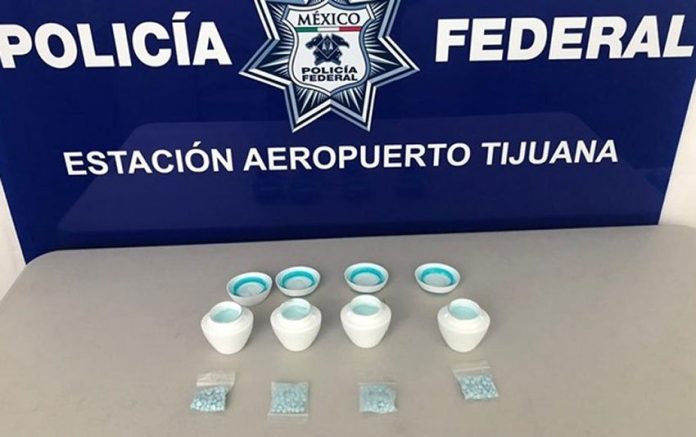Mexican cartels ship fentanyl-laced drugs to the United States from 13 states, according to the federal government.
In a confidential report seen by the newspaper El Universal, the Criminal Investigation Agency (AIC) said that drug trafficking organizations send heroin, cocaine and methamphetamine laced with the synthetic opioid to Tijuana from Mexico City, México state, Puebla, Michoacán, Jalisco, Querétaro, Morelos, Nayarit, Sinaloa, Durango, Baja California, Baja California Sur and Sonora.
Courier companies, private vehicles, buses, trucks and planes are used to get the illicit substances to the northern border city, from where they are smuggled across the border into California.
According to the United States Drug Enforcement Administration (DEA), the Jalisco New Generation Cartel (CJNG) and the Sinaloa Cartel are the main criminal groups that ship fentanyl into the country.
“Mexican traffickers order fentanyl from China, adulterate it, and smuggle it into the United States themselves, meaning an unknown amount of seized Mexican parcels containing fentanyl are ultimately of Chinese origin,” the DEA said in a 2018 report.
The AIC said that fentanyl precursors arrive in Mexico at the ports of Manzanillo, Colima, and Lázaro Cárdenas, Michoacán, from China, Hong Kong and Singapore.
The drug is then produced at clandestine labs in different parts of the country.
Such labs have been detected and raided in Baja California, Sinaloa, Sonora and Mexico City in recent months.
Police found 20,000 fentanyl pills at a lab in Mexicali last September and arrested two suspects, including a Russian man, the Associated Press reported.
Security specialist Ricardo Márquez Blas warned that Mexico is on track to become the largest producer of fentanyl in the world, predicting that the shipment of precursors to the country will only rise.
As a result, cartels will not only export more fentanyl to the United States but also begin to sell the drug domestically, especially in northern states, he said.
“. . . The cartels are also going to offer it to consumers in the country, if they’re not already doing so,” Márquez said.
Between 2007 and 2018, Federal Police seized more than 123 tonnes of fentanyl but according to a recent report by InSight Crime, a foundation dedicated to the study of organized crime in Latin America, “Mexico’s government does not see fentanyl as an important issue yet and has not devoted significant resources toward finding the principal drivers of the trade inside its borders.”
Fentanyl is 50 times more powerful than heroin, meaning that it can be lethal to users even in very small doses. In 2016, the United States Centers for Disease Control and Prevention estimated that the drug killed more than 20,000 Americans.
The rise in demand for the drug in the United States has been blamed for plummeting opium gum prices in Mexico.
After carrying out field work in the states of Guerrero and Nayarit, the Network of Researchers in International Affairs (Noria) said that prices paid to opium poppy farmers for the gum – the raw material for heroin – had fallen from 20,000 pesos (US $1,050) per kilo in 2017 to between 6,000 and 8,000 pesos (US $315-$420) last year.
Source: El Universal (sp)
